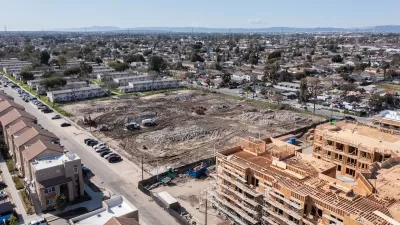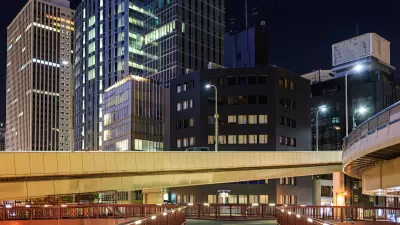AB 2243 paves the way for easier conversion of industrially and commercially zones properties for residential development.

In an analysis for The National Law Review, Brooke Miller outlines the potential impacts of California Assembly Bill 2243, which was signed into law by Governor Gavin Newsom last month.
The law expands the type of sites eligible for expedited approvals, adding regional mall properties of up to 100 acres that could help make larger multifamily developments with affordability requirements more financially feasible. The law also allows development within 500 feet of a freeway (previously prohibited), provided that the development takes steps to improve air quality.
According to Miller, “AB 2243 also provides some relief from the strict minimum density requirements of AB 2011, instead designating the “allowable” density- but still requires projects to meet at least 50% of the allowable density (75% for sites within ½ mile of an existing rail or bus rapid transit station) through 2026; after January 1, 2027, 75% is the minimum.”
AB 2243 also addresses a provision that usually requires developers to add common open space to new residential development, recognizing that the physical limitations of a site can make meeting that requirement challenging. “For both conversion and redevelopment projects, AB 2243 also limits mitigation fees to the incremental impact of the development, in recognition that the existing use likely already contributed to mitigating some development impacts.”
AB 2243 adds more qualifying “surrounding urban uses” to free up more sites for housing development. “AB 2243 also takes aim at AB 2011’s exclusion for sites in a “neighborhood plan”, which can work against a project in an outdated community plan area or a jurisdiction with few areas outside such planning boundaries.”
FULL STORY: State of Conversion: Update on Adaptive Reuse and Conversion Legislation

Manufactured Crisis: Losing the Nation’s Largest Source of Unsubsidized Affordable Housing
Manufactured housing communities have long been an affordable housing option for millions of people living in the U.S., but that affordability is disappearing rapidly. How did we get here?

Americans May Be Stuck — But Why?
Americans are moving a lot less than they once did, and that is a problem. While Yoni Applebaum, in his highly-publicized article Stuck, gets the reasons badly wrong, it's still important to ask: why are we moving so much less than before?

Using Old Oil and Gas Wells for Green Energy Storage
Penn State researchers have found that repurposing abandoned oil and gas wells for geothermal-assisted compressed-air energy storage can boost efficiency, reduce environmental risks, and support clean energy and job transitions.

Updating LA’s Tree Rules Could Bring More Shade to Underserved Neighborhoods
A new USC study finds that relaxing Los Angeles’ outdated tree planting guidelines could significantly expand urban tree canopy and reduce shade disparities in lower-income neighborhoods, though infrastructure investments are also needed.

California's Canal Solar Projects Aim to Conserve Resources and Expand Clean Energy
California’s Project Nexus has begun generating electricity from solar panels installed over irrigation canals, with researchers and state agencies exploring statewide expansion to conserve water and boost clean energy production.

HHS Staff Cuts Gut Energy Assistance Program
The full staff of a federal program that distributes heating and cooling assistance for low-income families was laid off, jeopardizing the program’s operations.
Urban Design for Planners 1: Software Tools
This six-course series explores essential urban design concepts using open source software and equips planners with the tools they need to participate fully in the urban design process.
Planning for Universal Design
Learn the tools for implementing Universal Design in planning regulations.
Heyer Gruel & Associates PA
City of Moreno Valley
Institute for Housing and Urban Development Studies (IHS)
City of Grandview
Harvard GSD Executive Education
Salt Lake City
NYU Wagner Graduate School of Public Service
City of Cambridge, Maryland





























